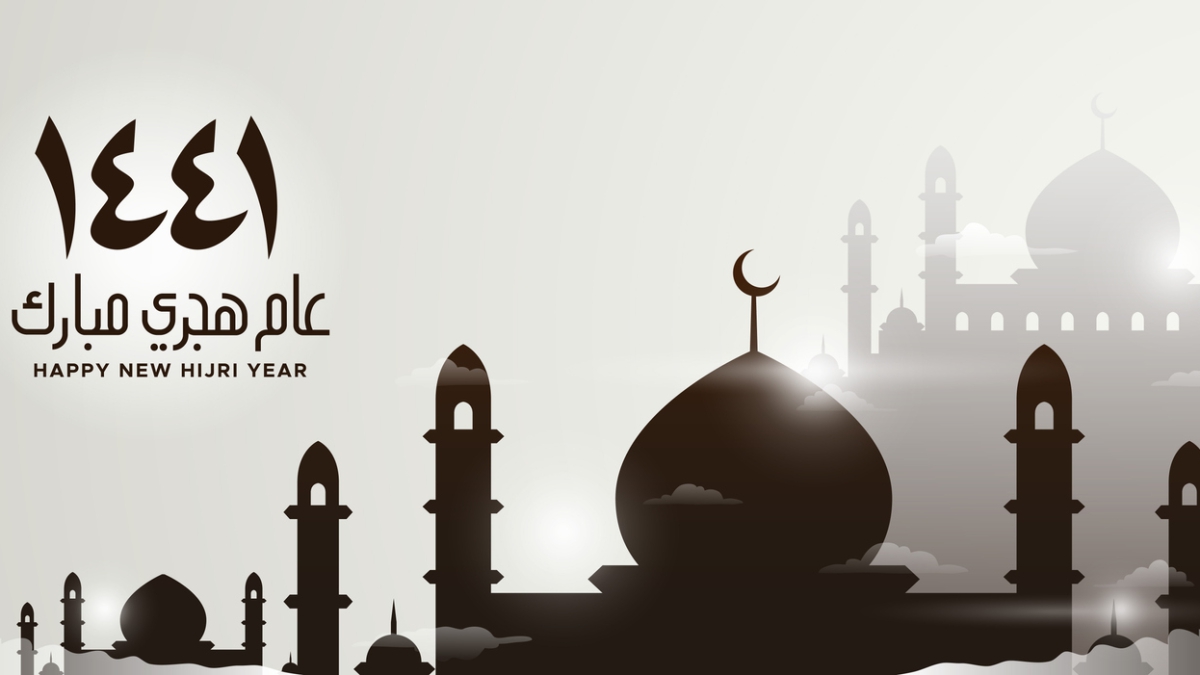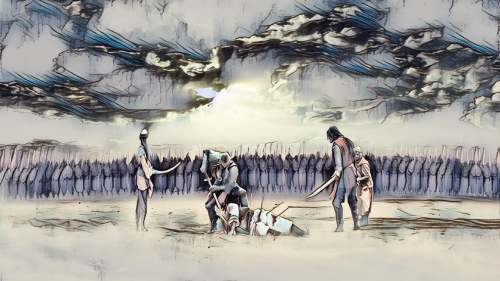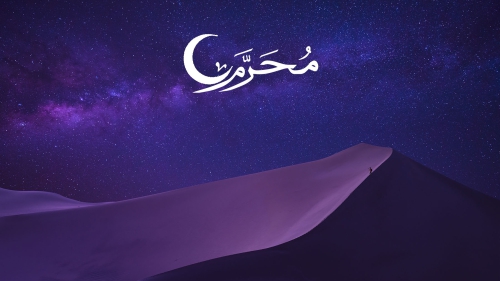A Muslim Calendar Lesson for All The Children of Adam

Although both Roman Catholic and Eastern Orthodox Church calendars mark January first as the Feast of the Circumcision (of Jesus); few Americans or Europeans of any religion, would consider January first to be a religious holiday today.
But a growing number of academics in the disciplines of Comparative Religion, Asian History, and Archaeology do think that, if the New Year date of January 1 is not a sectarian day, to label the new year itself as A.D. (the year of our Lord-Jesus) is sectarian.
So, they have now started using the label CE (common era) and BCE (before the common era) for dating years. In our modern era, using BCE and CE to stress a more universal, less sectarian Christian view of historical time seems to be growing.
On September 1, Muslims celebrated the beginning of 1441 in the Islamic calendar, and on September 30, Jews will celebrate the beginning of 5780 in the Jewish calendar. We can learn some valuable lessons from the three different religions’ calendar systems.
In 638 CE, about six years after the death of Prophet Muhammad, and sixteen years after the Hijra, (the escape of Muhammad and most of his followers, from oppression and persecution in the Arabian city of Makkah), Islam's second caliph, 'Umar, decided to create a new calendar to govern the affairs of Muslims and the lands newly conquered by them.
These conquered countries; Persia, Syria, Iraq, and Egypt; all used a calendar with a different New Year date and a different historical starting point; even though all four of them were solar calendars of 365 days.
Since they did not use the phases of the moon at all, they were not suitable for Muslims because the Qur'an (10:5) says, “It is He (God) who made the sun to be a shining glory, and the moon to be a light, and measured out her stages (phases), that ye might know the number of years and the count”.
The Torah also states the importance of the moon’s phases: “God said, “Let there be lights in the vault of the sky to separate day from night, and let them serve as signs to mark sacred times, and days and years.” (Torah Genesis 1:14)
This was understood by Jews and Muslims to mean: you should count holy days in the yearly cycle by lunar months.
In pre-Islamic Arabia, various lunar systems of measuring the year had been used for centuries. Some of these calendars apparently were lunar only, while others were lunar/solar, using months based on the phases of the moon and intercalating extra days outside the lunar cycle to synchronize the lunar calendar with the seasons. This is also how the Jewish calendar works to this day.
In addition, the solar calendars used by the Persians, Syrians, and Egyptians were identified with pagan cultures. Umar therefore decided to create a calendar specifically for the Muslim community. It would be lunar only, with 12 months, each with 29 or 30 days. This gives a lunar year of 354 days, 11 days fewer than the solar year.
The Islamic lunar calendar did not need to be synchronized to the solar seasons because, unlike the Jewish calendar, no Islamic festivals are related to the agricultural cycle.
The Jewish calendar has to add a lunar month seven times in nineteen years in order to keep Hag/Hajj Sukkot, its pilgrimage harvest festival, in the fall.
'Umar also decided to choose a new starting date (epoch) for the new Muslim calendar: the Hijra, the emigration of the Prophet Muhammad from Makkah to Madinah, where Muslims first attained religious freedom and political autonomy.
When 'Umar established the Muslim calendar, the Hijra which occurred on the first day of Muharram was determined to be in the year 1 according to the Islamic calendar, which was named "hijri" after its epoch. (This date corresponds to July 16, 622 CE in the Gregorian calendar.)
While the Persians had no epoch because like the Jews in the Biblical period, they dated events by the year of the reigning king. The Syrians and Iraqis both used the Seleucid epoch calendar which in Syria, began in the autumn of 312 BCE, while in Iraq the epoch began in the spring of 311 BCE, half a year later than in Syria.
In Egypt the Christians used a calendar that started from 284 CE, when Diocletian became Roman emperor. This seems very strange since Diocletian, in 303 and 304 CE, promulgated four anti-Christian laws which led to brutal repressions against Christians, especially in the eastern part of the empire.
Nevertheless, Egyptian Christians in later generations began to count the years from the beginning of the reign of Diocletian, their oppressor because they were proud of surviving the years of oppression. This epoch is still used by Coptic Christians, who call it the ‘Era of Martyrs’.
In Europe the epoch of the Christian Era, first used by Dionysius Exiguous in his calculations (in 525) of past and future dates for Easter, began to be used. The Christian calendar epoch starts with the birth of Jesus, placed in the year 1 CE. But it did not become widespread in Europe until the 9th to 10th century.
One might expect that the Jewish calendar would start with the birth of Abraham (as the Christian calendar starts with the birth of Jesus), or from the Exodus from Egypt (the trans-formative experience of the Jewish people) as the Muslim calendar starts with the Hijra), or from the giving of the Torah at Mount Sinai (the enlightenment of the Jewish people) as the Buddhist calendar starts with the enlightenment of Siddhartha Gautama; the Buddha.
But the second century Rabbis who constructed the calendar Jews currently use, chose to begin with Adam and Eve i.e. the beginning of written history and urban civilization. The word Adam in Hebrew means mankind or Homo Sapiens-- the species. The exit of Adam and Eve from the Garden of Eden symbolizes the transition of humanity from a largely nomadic, stone age society of hunter-gatherers, to a more advanced metal working bronze age society of farmers and village dwellers.
By starting the Jewish calendar with a historical transition that would eventually have a universal impact on all of human society, the second century rabbis followed the lead of the Torah which begins not with Judaism or the Jewish People, but with recorded history.
All historical dates that are derived from written records will fit into the Jewish calendar. The earliest writing comes from the Mesopotamian city of Uruk (Genesis 10:10) and dates to about 5,500 years ago i.e. the third century of the Jewish calendar.
The first dynasty in Egypt arose in the 7th century of the Jewish calendar and the first stone pyramid in the 10th century. Abraham was not born till the 21st century of the Jewish calendar. It is only in the generations after Abraham, that Biblical history begins to focus on the religious development of one specific people.
Today in the West, it is customary for Muslims and Jews to use the abbreviations BCE (before the common era) and CE (common era) acknowledging, but not believing, that Christians see the birth of Jesus as separating human history in two parts.
Since Muhammad was the continuation and confirmation of all the prophets who had come before him; not using a 'before A.H.' for dates prior to the Hijra was the Muslim way of saying that while the Jewish calendar epoch was the oldest, and the Muslim calendar date was the newest, all the other religious calendars epoch dates still remained valid for other religions.
This is a good lesson for all religions in today's world.
Allen S. Maller is an ordained Reform Rabbi who retired in 2006 after 39 years as the Rabbi of Temple Akiba in Culver City, California. His web site is: www.rabbimaller.com. Rabbi Maller blogs in the Times of Israel. His book ‘Judaism and Islam as Synergistic Monotheisms: A Reform Rabbi's Reflections on the Profound Connectedness of Islam and Judaism’ (31 articles previously published by Islamic web sites) is for sale ($15) on Amazon.
Topics: Hijrah (Migration), History, Interfaith, Islamic Calendar, Judaism, Torah
Views: 2465
Related Suggestions

















